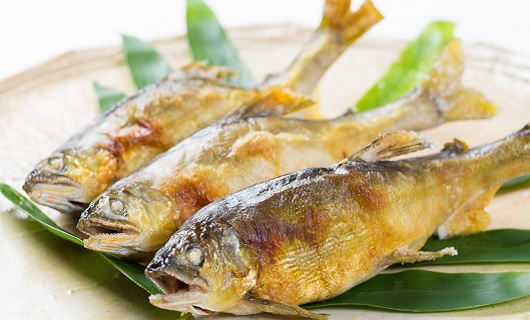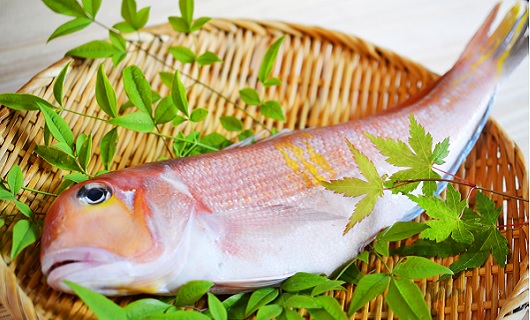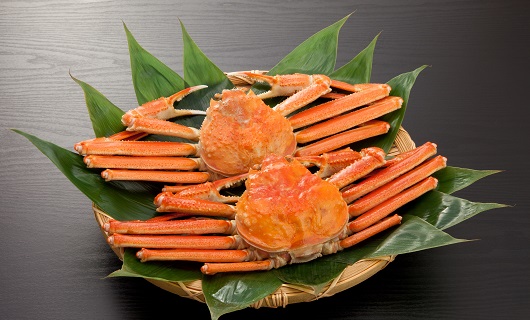
Ayu - Sweetfish
Kyoto is far from the sea and fresh seafood is hard to obtain, so river fish dishes have long been developed in Kyoto. Ayu (sweetfish) lives in clear streams and is known as a fish with a surprisingly long harvest season. Ayu is eaten for about seven months and depending on when it is caught the naming also differs, starting with chi-ayu in April, followed by waka-ayu in May and June, reaching its peak in July and August, komochi-ayu in September, and ochi-ayu in October. Ayu, also called "fragrant fish", as it has a distinct aroma and lives in clean, clear water.

Amadai - Red Sea Bream
Amadai is often called "Guji" in Kyoto and surrounding areas, and was brought overland to the capital of Kyoto, which did not have access to the sea, after being processed immediately after being caught so that it would not lose its freshness. Amadai from Tango in Kyoto Prefecture and Wakasa in Fukui Prefecture are particularly famous. Only Amadai - red sea breams of 500g or more that are landed at fishing ports in Kyoto Prefecture can be called "Tango Guji" and are registered as a "Kyoto Brand Product". As a result, quality control is carried out in accordance with strict regulations from landing to shipping. Red sea bream is considered to be a difficult fish to keep fresh and to cook, but when cooked correctly, it has a sweet flesh and a strong flavour, making it an important luxury food in the world of Kyoto cuisine.

Crab
The northern part of Kyoto Prefecture, which faces the Japanese Sea, is a treasure trove of Matsuba crab, certified by strict selection as a branded crab with a tag. The "Taiza crab" from the Taiza fishing port on the Tango Peninsula and the "Maizuru crab" from the Maizuru port are famous throughout Japan. The female crabs are called "Koppegani (Sekogani)" and are small in size but packed with meat, rich in crab miso (innards), and the eggs are delicious. The crabs landed at the Taiza Fishing Port (Tango Town, Kyotango City) were awarded a Regional Organization Trademark by the Japan Patent Office in 2006, and are called "Taiza Crab". They are close to the fishing grounds off the coast of Kyoto Prefecture, and the freshness of the catch is excellent due short transportation distance, and high quality is maintained through strict resource management and careful selection.

Buri - Yellowtail
In the Ine town, the north-east of the Tango Peninsula in Kyoto Prefecture, there is a National Important Preservation District for Groups of Traditional Buildings with unique architecture such as the boathouses of Ine, and is famous as the production center of "Ine yellowtail". The yellowtail that comes south from the north sea in winter is exquisite because it is plump and fat, has a firm texture. The yellowtail caught in large fixed nets and landed in Ine is called "Ine yellowtail" and is one of the best yellowtail fisheries in Japan. The water temperature in Ine Bay is 10 degrees Celsius in winter, and there are also fish tanks where the fish are farmed. We recommend the shabu-shabu of the fresh yellowtail caught that very day.
